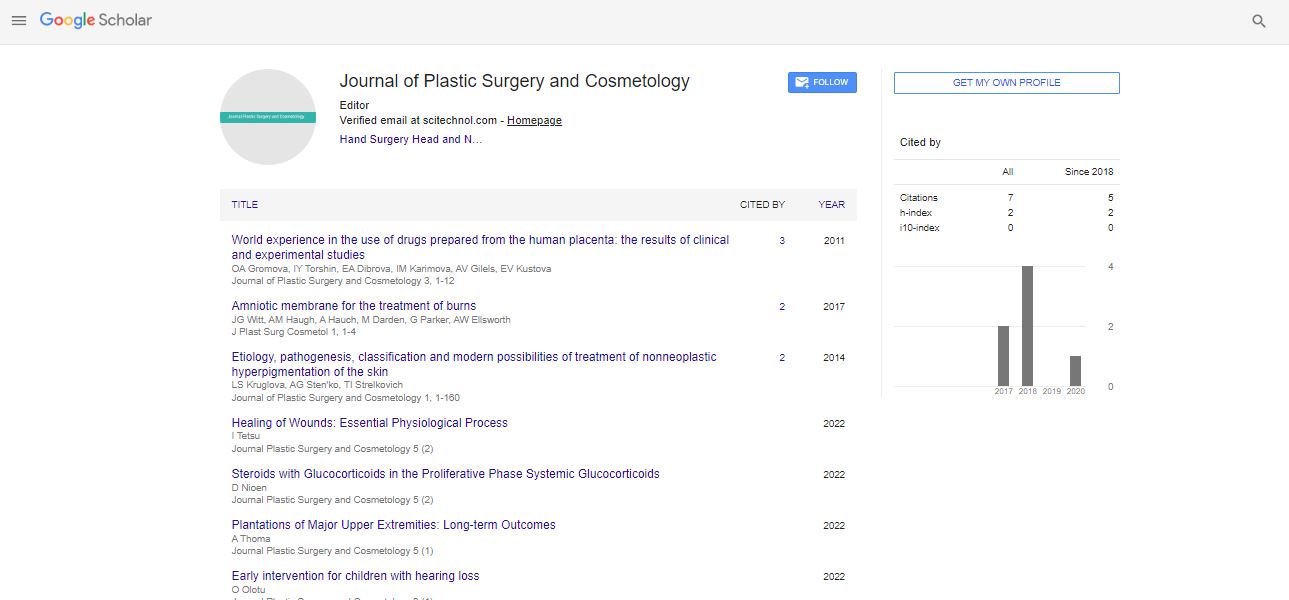Role of perioperative reduction treatment immediately after Lymphaticovenular Anastomosis (LVA)
Fumio Onishi*, Wataru Tsugu, Nanae Okuda, Toshiharu Minabe
Saitama Medical University, Japan
Tochigi Cancer Center, Japan
: J Plast Surg Cosmetol
Abstract
Introduction: Lymphaticovenular anastomosis (LVA) is a surgical treatment that requires a combination with complex decongestive therapy (CDT). CDT is a biphasic treatment, a reduction phase followed by a maintenance phase. In the conventional treatment scheme, LVA is indicated generally while the maintenance phase. Previous studies have mentioned a one-month suspension of CDT before resuming compression therapy postoperatively. However, we presumed that the scheme would miss the advantages of LVA because the early postoperative period is the best opportunity for efficient lymph drainage. Therefore, we hypothesized that perioperative reduction treatment should boost the treatment outcome after LVA and established the perioperative reduction treatment protocol. The present study aimed to clarify the efficacy of integration of LVA and perioperative reduction treatment. Methods: The current study included 174 consecutive patients with lower extremity lymphedema who underwent LVA. They were divided into two groups according to perioperative therapeutic intervention following LVA surgery: patients with perioperative reduction treatment (PORT), namely compression therapy and remedial exercise (PORT group, 109 patients) and patients with no additional perioperative intervention (control group, 65 patients). The propensity score matching analysis identified a total of 56 matched pairs. Edema reduction was compared between the two groups. Results: Patients with perioperative reduction therapy showed a significantly higher edema reduction than the control group (reduction in lower extremity lymphedema index, 13.9 vs 7.1; P=0.04). No adverse complication related to perioperative reduction treatment was observed in our cohort. Conclusion: Integrating reduction treatment in the early postoperative period after LVA would be highly beneficial for maximizing the treatment outcome. Keywords: lymphedema, LVA, reduction treatment, compression therapy, exercise, perioperative management
Biography
Dr. Onishi (MD, Ph.D.) is an associate professor of plastic surgery at Saitama Medical Center, Saitama Medical University, and has been involved in research, education, and clinical treatment related to microsurgery for more than ten years. His clinical practice ranges widely in reconstructive microsurgery for trauma, lymphedema, breast reconstruction, and transplant. Specifically, he has extensively practiced lymphatic microsurgery including lymphaticovenular anastomosis and vascularized lymph node transfer. Dr. Onishi has pursued an optimal treatment strategy for lymphedema where surgery and conservative therapy collaborate and support each other effectively. He also has a profound knowledge of lymphatic imaging using magnetic resonance lymphangiography and infrared indocyanine green lymphangiography. He finds great joy in making his patients happier with his knowledge and skills.
 Spanish
Spanish  Chinese
Chinese  Russian
Russian  German
German  French
French  Japanese
Japanese  Portuguese
Portuguese  Hindi
Hindi 